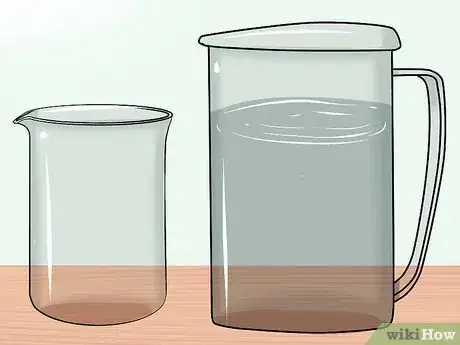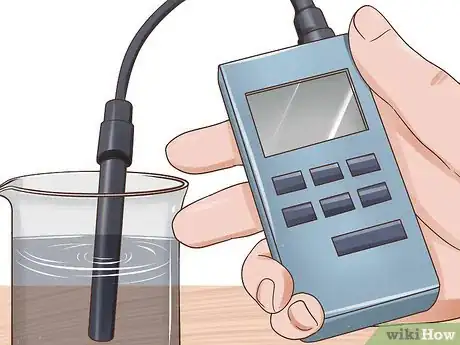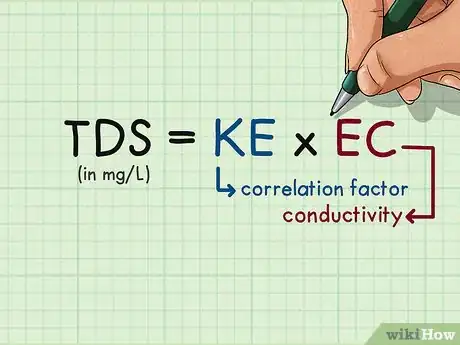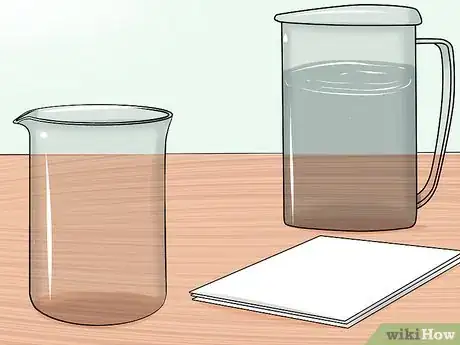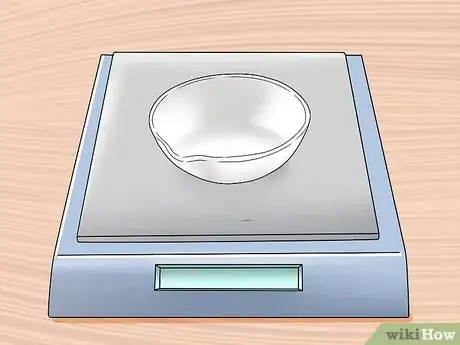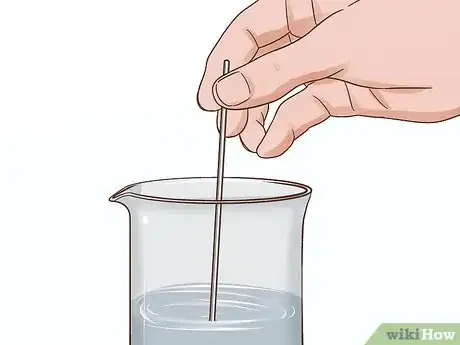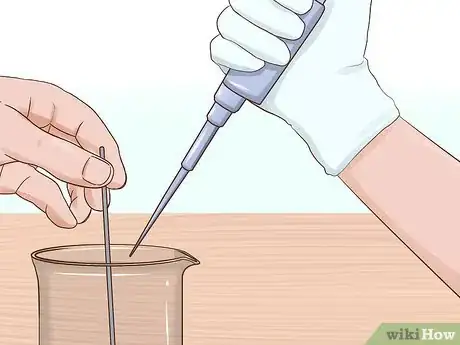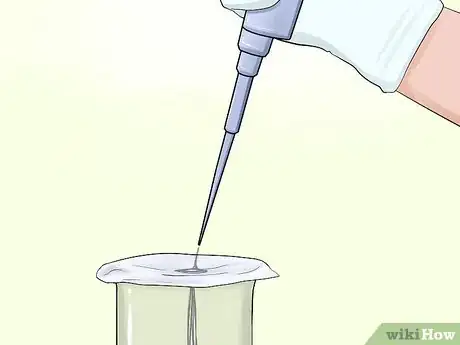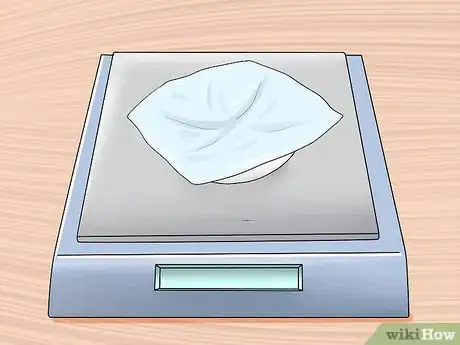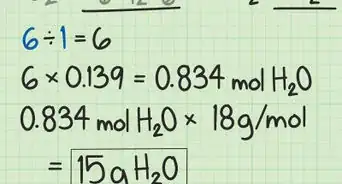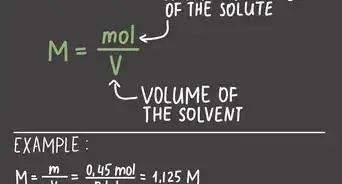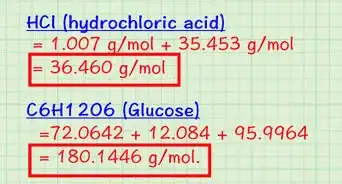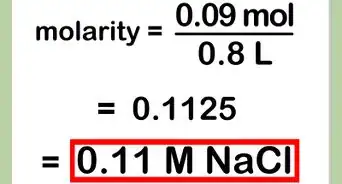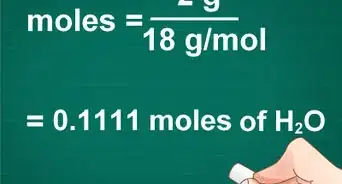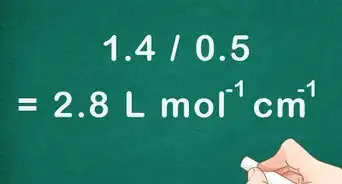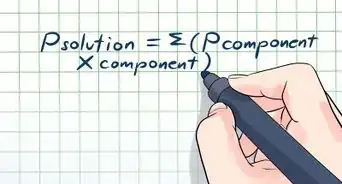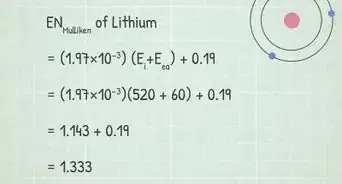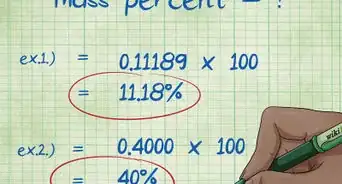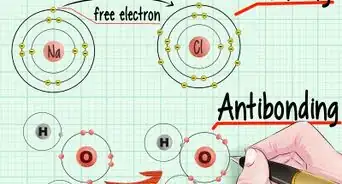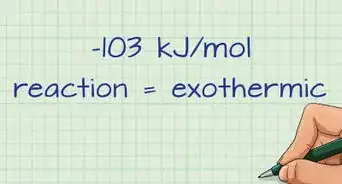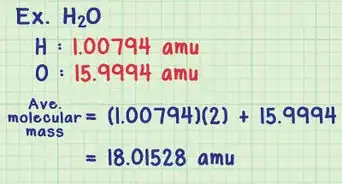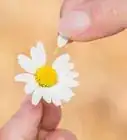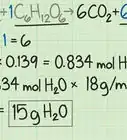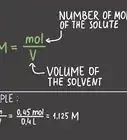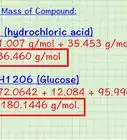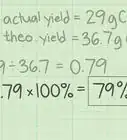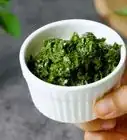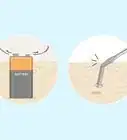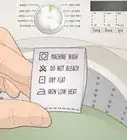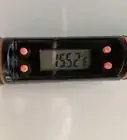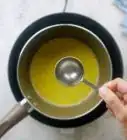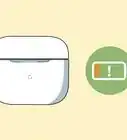wikiHow is a “wiki,” similar to Wikipedia, which means that many of our articles are co-written by multiple authors. To create this article, 17 people, some anonymous, worked to edit and improve it over time.
There are 8 references cited in this article, which can be found at the bottom of the page.
This article has been viewed 196,653 times.
Learn more...
Total dissolved solids (or TDS) is the measure of all organic and inorganic substances dissolved in a given liquid, revealing the proportion of different solids. There are a number of different uses for TDS: it can measure pollution levels in lakes and rivers or mineral levels in drinking water, for example, and also has agricultural applications in irrigation. To calculate the TDS for a particular liquid, follow these steps.
Steps
Using an Electrical Conductivity Meter
-
1Gather your materials. Before attempting to measure the TDS of your sample, make sure to prepare a clean, clear space with the appropriate instruments and tools for the task. If you do not have access to the materials necessary for this procedure, they can all be purchased easily online. You will need the following:[1]
- A clean, properly sterilized beaker that is free of dust or other particles
- A sample of the water you want to analyze, collected into the sterilized beaker. Ideally, the sample should be at 25° C (or 77° F) at the time of analysis.
- An electrical conductivity meter — a device used to measure a solution's ability to conduct electricity. It works by releasing a current into a liquid, then measuring the resistance.
-
2Measure the conductivity of the sample. Make sure your beaker with the water sample in it is placed on a flat, stable surface. Turn on the electrical conductivity meter, then insert the measuring lead into the sample. Wait for the reading on the conductivity meter to become stable before noting the result.[2]
- You may have to wait a few seconds before the reading stabilizes, but it's important that you wait until the number on the display stops changing.
- The measurement displayed on the electrical conductivity meter is the purity of the water, measured in µS (micro-Siemens). The lower the µS value, the purer the water, with 0 µS being pure, unpolluted H20.
Advertisement -
3Plug your data into the TDS formula. The basic formula for calculating total dissolved solids looks like the above illustration. In the formula, TDS is measured in mg/L, EC is the conductivity of your sample (the reading from your electrical conductivity meter), and ke is the correlation factor. The correlation factor depends on the liquid being used as the sample, and it may also vary according to atmospheric conditions. It varies between 0.55 and 0.8.[3]
- In the example above, say the correlation factor at the current temperature and in the current pressure conditions is 0.67. Plug your values into the formula. The TDS for your sample is therefore 288.1 mg/L.
- Water with a TDS of less than 500 mg/L meets the Environmental Protection Agency's standards for drinking water. [4]
- A high TDS does not necessarily mean that water is unsafe for consumption; it may just suggest that the water will have unpleasant aesthetic qualities in terms of color, taste, smell, etc. If you are concerned about the safety of your drinking water, you should have your water professionally tested.
Using Filter Paper and a Scale
-
1Gather your materials. Prepare a clean, clear space with the appropriate instruments and tools for the task. If you do not have access to the materials necessary for this procedure, they can all be purchased easily online. You will need the following:[5]
- A clean, properly sterilized beaker that is free of dust or other particles
- A sample of water, poured into the beaker
- Filter paper
- An evaporating dish
- A stirring stick
- A pipette large enough to collect a 50 ml sample
- A scale
-
2Weigh the evaporating dish in milligrams (mg). Make sure that it is completely dry and completely clean of any extraneous particulate matter.[6]
-
3Stir the water sample in the beaker with your stirring stick. Stir vigorously enough to agitate the solution. This ensures that any particulate matter is more or less evenly distributed throughout the sample.[7]
-
4Collect 50 mL of the water in the pipette. Make sure you're still stirring the water while collecting the sample — don't let the solution settle before you pipette your smaller sample. If you find this difficult to accomplish, you might ask a friend to pipette the sample while you stir.[8]
-
5Extract the filtrate. Put the 50 mL water sample from the pipette through the filter paper three times to ensure all particulate matter has been collected in the filter.
-
6Weigh the evaporating dish with the filtrate. Transfer the filtrate from the previous step to the evaporating dish you weighed in step 2, and wait for the filtrate to dry completely. Once the dish and filtrate are dry, weigh them in milligrams (mg).
-
7Plug your data into the formula. Use the following formula to calculate the TDS of your solution: TDS=[(A-B) * 1000]/mL sample
- In this formula, A stands for the weight of the evaporating dish + filtrate, and B stands for the weight of the evaporating dish on its own.
- Because you pipetted 50 mL of water, the value of "mL sample" in this case would be 50.
- The final value of the Total Dissolved Solids is measured in mg/L.
- Water with a TDS of less than 500 mg/L meets the Environmental Protection Agency's standards for drinking water.[9]
- A high TDS does not necessarily mean that water is unsafe for consumption; it may just suggest that the water will have unpleasant aesthetic qualities in terms of color, taste, smell, etc. If you are concerned about the safety of your drinking water, you should have your water professionally tested.
Community Q&A
-
QuestionHow do I measure liquid?
 Community AnswerTo measure liquid, pour it in a beaker or graduated cylinder. Then measure with the bottom of the meniscus, which is the curved upper surface of a liquid in a tube.
Community AnswerTo measure liquid, pour it in a beaker or graduated cylinder. Then measure with the bottom of the meniscus, which is the curved upper surface of a liquid in a tube. -
QuestionHow do I check total dissolved solids in water?
 Community AnswerNote how much the water level has risen. The amount displaced will be in direct relation to the amount dissolved.
Community AnswerNote how much the water level has risen. The amount displaced will be in direct relation to the amount dissolved. -
QuestionWhat is the desired TDS?
 Community AnswerIf you have a RO system, the TDS meter reading should be over 90%. (Tap water TDS minus RO TDS) divided by tap water TDS. Should equal over 90%, if not, replace the membrane. My Reverse Osmosis TDS is usually 11. You want it to be a smaller number. Bottled water with minerals added will have a different reading because the TDS meter will count the minerals added to the water, so you will not get an accurate reading.
Community AnswerIf you have a RO system, the TDS meter reading should be over 90%. (Tap water TDS minus RO TDS) divided by tap water TDS. Should equal over 90%, if not, replace the membrane. My Reverse Osmosis TDS is usually 11. You want it to be a smaller number. Bottled water with minerals added will have a different reading because the TDS meter will count the minerals added to the water, so you will not get an accurate reading.
References
- ↑ https://sciencing.com/standardize-ph-meter-8504581.html
- ↑ https://www.youtube.com/watch?v=901QeXLH2Zg
- ↑ https://www.watersystemscouncil.org/download/wellcare_information_sheets/potential_groundwater_contaminant_information_sheets/2010920TDS_FINAL.pdf
- ↑ https://www.knowyourh2o.com/indoor-4/primary-standards
- ↑ https://www.extendednotes.com/after-school-activities/solubility-experiment
- ↑ https://study.com/learn/lesson/evaporating-dish-function-uses.html
- ↑ https://littlebinsforlittlehands.com/which-solids-dissolve-in-water-chemistry/
- ↑ https://www.youtube.com/watch?v=5DzybtC0Brk
- ↑ https://www.knowyourh2o.com/indoor-4/primary-standards
About This Article
To determine the total dissolved solids in a liquid, use an electrical conductivity meter to test the liquid's conductivity. Before you do the test, make sure that your liquid is in a clean and sterilized dust-free beaker. Once you have a result from your meter, plug that value into the formula: Total dissolved solids equals correlation factor times conductivity or TDS = KE × EC. This should give you the dissolved solids in milligrams per liter. To learn how to calculate dissolved solids using a filter paper and scale, scroll down!
